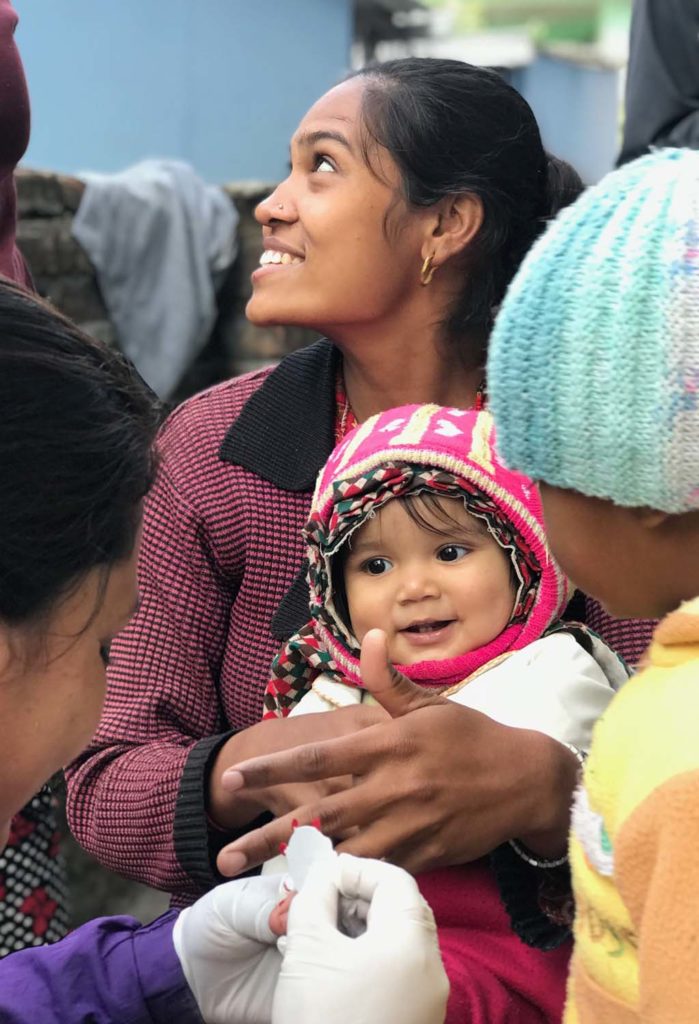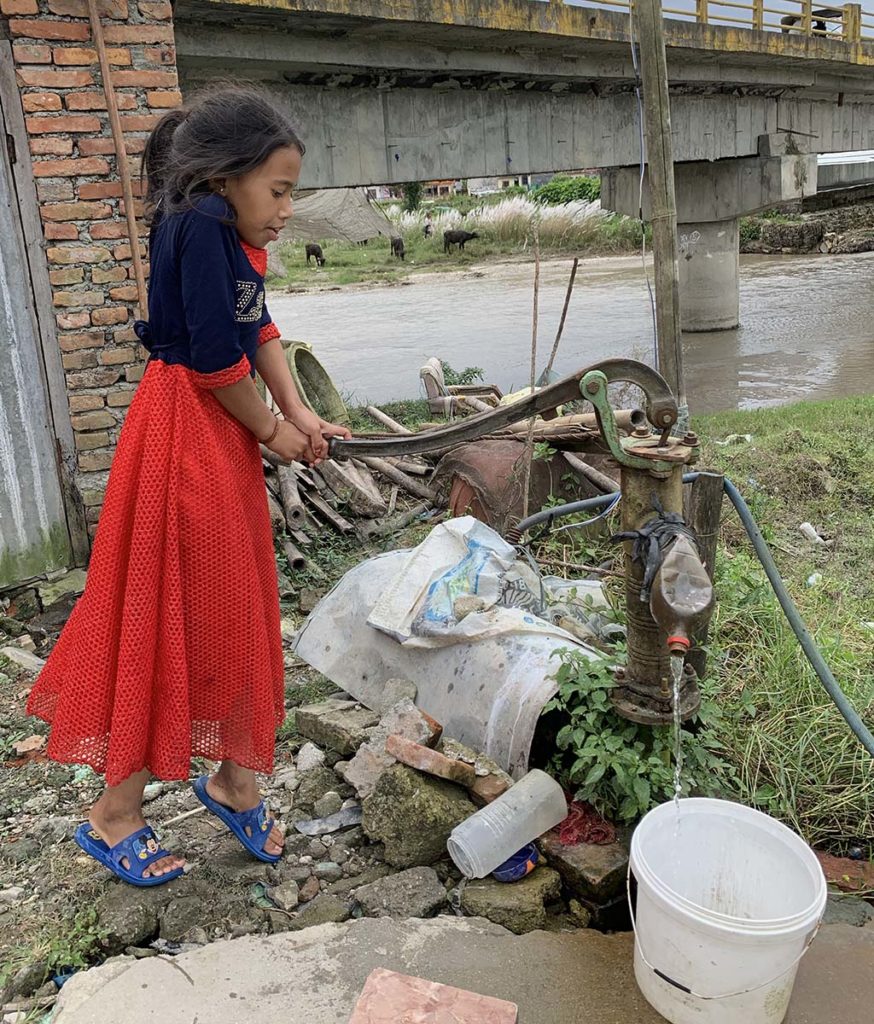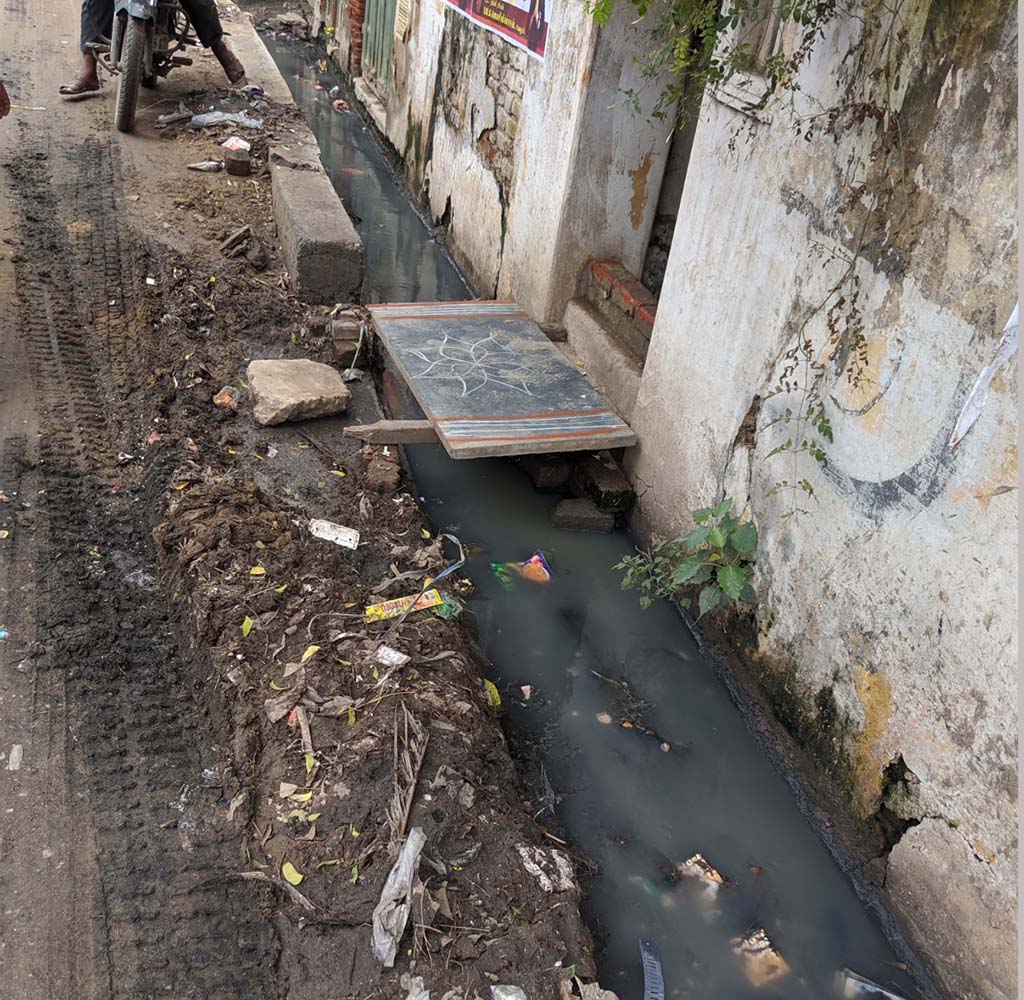Most people in the United States, myself included, tend to think of typhoid as a disease vanquished by 1920 with the advent of public sewage systems and antibiotics.
Some of us may vaguely recall the fascinating story of the woman known as "Typhoid Mary" who, as an asymptomatic carrier of the disease, is believed to have been responsible for an outbreak of typhoid fever in nearly 3,000 New Yorkers in the early 1900s.

But in the developing world, typhoid fever remains a deadly disease that afflicts millions of people and is responsible for tens of thousands of deaths each year.
Infectious disease and population health experts Jason Andrews, MD, and Stephen Luby, MD, and their teams have devised a new way for countries to quickly estimate the prevalence of the disease within their boundaries by collecting finger-prick blood samples from a few hundred people.
Such information will help a country's leaders decide whether to rollout a typhoid vaccine to combat the spread of the disease, and will inform efforts by the World Health Organization and public health officials to track the development of multi-drug resistant typhoid among countries and continents.
Although the WHO has recommended the use of the typhoid vaccine in areas where the disease is endemic, only four countries have implemented that recommendation, based in part on evidence generated by Andrews' team.
Their research has led to a recent trio of papers in Lancet Global Health and Lancet Microbe describing the prevalence of typhoid fever in Bangladesh, Nepal and Pakistan; the international spread of multi-drug resistant typhoid; and the usefulness of the finger prick method to estimate the prevalence of typhoid in a community or country.
Recently, I had a chance to catch up with Andrews and learn more about his team's efforts.
What is typhoid fever and how it is spread? What are the economic and social costs?
Typhoid fever is caused by a bacterium called Salmonella Typhi. It's among the oldest bacterial infections in the world, and it was a major cause of illness and death in the United States until cities instituted clean water and sanitation systems in the early 20th century.
Today, typhoid causes between 10 million and 20 million illnesses and more than 100,000 deaths worldwide -- nearly all in low- and middle-income countries, predominantly in South Asia and sub-Saharan Africa.
The bacteria spreads through contaminated food and water, and the highest incidence rates often occur in settings where there is a dense population and sewage contamination of water consumed in households. Large cities in low-income countries bear the greatest burden.
Typhoid predominantly affects children and, in addition to the direct health effects that include prolonged illness and risk of death, it also has substantial economic impacts due to the direct costs of health care as well as missed attendance at school and work for children and their caregivers.
Can typhoid fever be prevented or treated?
Prior to 1948, there were no proven antibiotic therapies for typhoid, and between 10% and 25% of infected people died. In 1948, the antibiotic chloramphenicol was found to be an effective treatment, and this, together with subsequent antibiotics, reduced typhoid case fatality to less than 1%.

However, S. Typhi began to develop resistance to chloramphenicol within two years, and during the subsequent decades we have seen the proverbial antibiotic arms race unfold as new antibiotics were introduced only to have the bacteria again become resistant.
By the 1980s, multidrug-resistant typhoid, which is resistant to the three classical antibiotics that were effective against it, had spread worldwide.
The bacteria has been controlled in United States, Europe and much of Latin America through improved municipal water and sanitation systems, and without vaccination. But such improvements haven't happened at scale in South Asia and sub-Saharan Africa, even though they are certainly the best long-term solution.
The only immediately scalable intervention to prevent the tremendous morbidity and mortality from typhoid is vaccination, which was recommended by the WHO in 2018. These new generation, conjugate vaccines cost about $1 to $1.50 per dose and are about 85% effective. The need is particularly acute as the typhoid bacteria have developed resistance to almost all available antibiotics, making it much more difficult to treat.
If there is a recommended vaccine, why aren't countries using it?
Low- and middle-income countries make difficult decisions every year about which vaccinations to prioritize for introduction. The biggest obstacle to adopting the vaccine is lack of surveillance data. Many at-risk countries have little to no data on how much typhoid they have, and therefore may not prioritize the use of typhoid vaccines.
Surveillance for typhoid using traditional methods is actually somewhat challenging. It requires active clinical surveillance at hospitals, blood culture and microbiology capacity, and then understanding where people with fever seek care.
In our recent Surveillance for Enteric Fever in Asia Project, this involved visiting more than 75,000 households and setting up prospective surveillance at multiple hospitals for three years. It's a highly effective way to characterize typhoid incidence, but it's not a simple, low-cost approach that can be easily or quickly done anywhere, which is what we need. We need to support them with tools to better understand their burden of typhoid so that they can make informed decisions.
Describe the findings and public policy outcomes of your recent studies
Our first study is a large typhoid surveillance study that demonstrated a high burden of typhoid and severe typhoid in Nepal, Bangladesh and Pakistan. The results led policymakers in those countries to introduce typhoid vaccine (Nepal and Pakistan are two of the four countries that have introduced the vaccine, and Bangladesh is moving that way).
The second study is a method we developed that enables countries to determine typhoid incidence data without sophisticated surveillance infrastructure. It uses blood from finger sticks, gathered in the community or schools.

We validated this approach in Nepal, Bangladesh, Pakistan and Ghana and now have used it to generate new data in South Sudan, India, and Kenya. We also have projects in the works in Sierra Leone, Cote d'Ivoire, and Malawi -- all countries uncertain about their typhoid burden and whether to introduce the vaccine.
The final study addressed this question of antimicrobial resistance. Over the past two decades, resistance has grown in South Asia, and now more than 90% of bacteria isolates are resistant to the latest treatment. The WHO recommends vaccination in countries with high levels of antimicrobial resistance.
We found through this large global study that typhoid regularly spreads across borders within South Asia and between South Asia and sub-Saharan Africa, and that, after appearing in a location, resistance quickly expands and becomes dominant. As a result, waiting until a country has documented antimicrobial resistance is often too late to mitigate its effects.
Additionally, we found that India, which has the world's largest burden of typhoid but hasn't yet decided whether or how to introduce the vaccine, is the country in which most antimicrobial resistance occurs and the origin of much of the global spread.
Furthermore, another study we completed with colleagues in India found that introducing he typhoid vaccine would actually be less expensive than the costs of caring for typhoid cases in that country. So supporting India to introduce typhoid vaccines should be a global priority.
More generally, we need to start thinking about typhoid, like other infectious diseases, as global -- rather than country-specific -- challenges that require global responses, particularly investments in vaccination in settings that need it the most.
Top image by Roshani Andrews of a woman carrying water from a tap to her home in Nepal.




